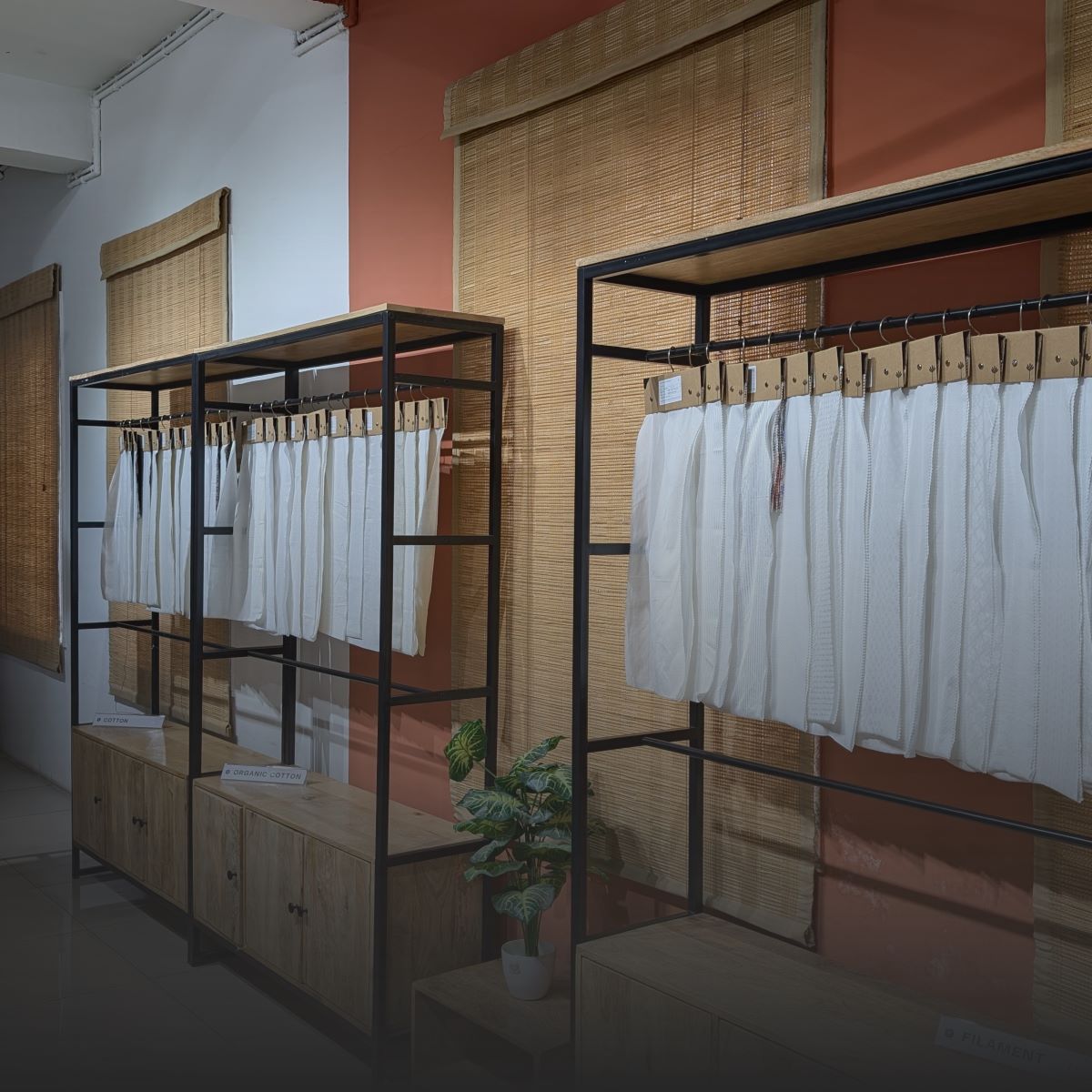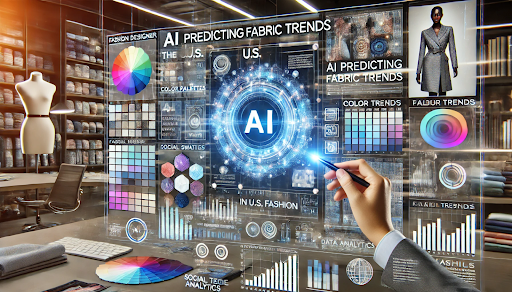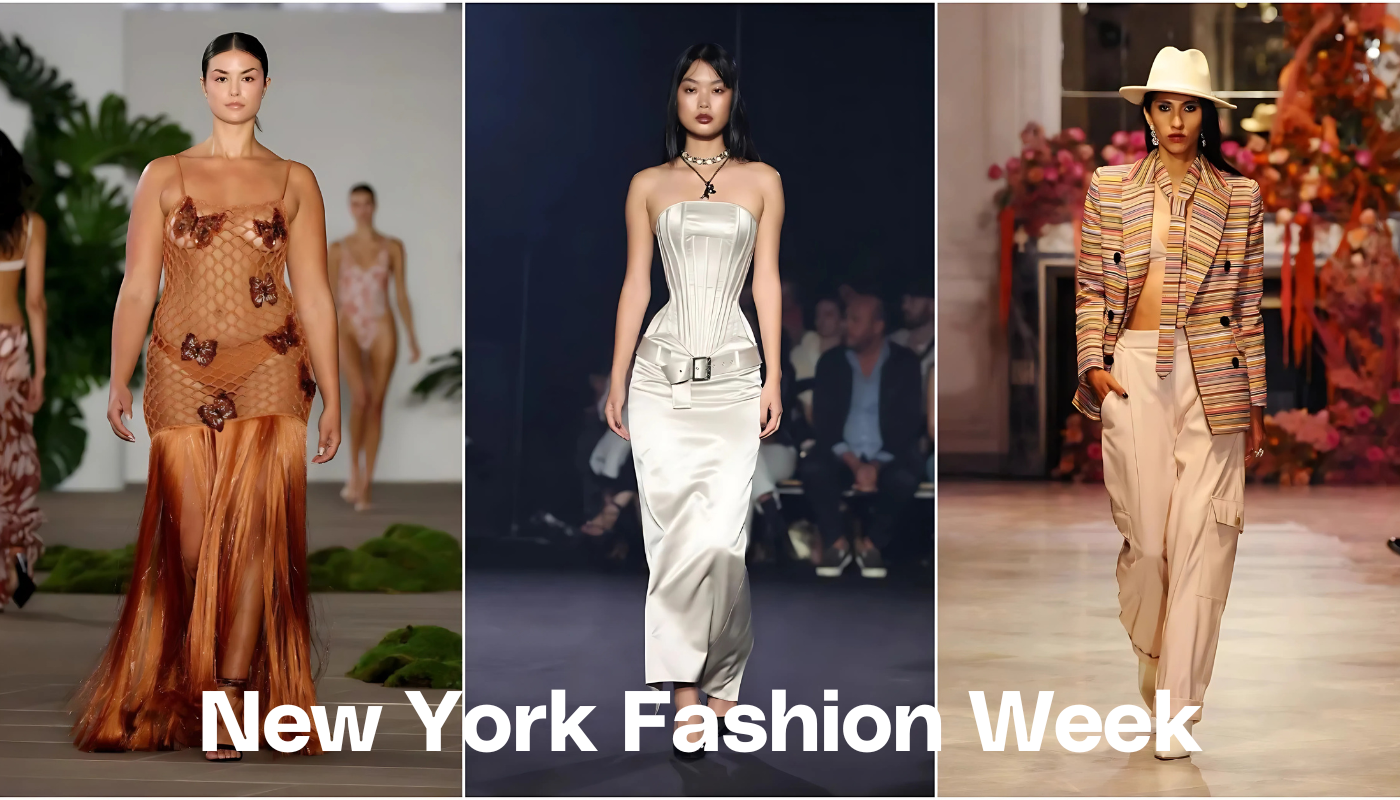Fashion is always changing and staying ahead of trends is not easy. Designers, fabric makers and stores need to know what fabrics people will love, which colors will be popular and which materials will become trendy. In the past, they guessed based on experience or past trends. But now, Artificial Intelligence (AI) is making trend predictions smarter and faster.
AI looks at vast amounts of information, such as fashion shows, social media, shopping trends, and more, to find patterns and predict what will be popular next. This helps businesses make better choices based on accurate data instead of just guessing.
In this blog, we’ll explore how AI is changing fabric trends in the U.S. market, the benefits it brings, how it is used today and how it could change the textile industry in the future.
What is AI and How Does It Predict Fabric Trends?
AI is a broad technology field that involves machine learning, neural networks and data analytics to simulate human intelligence. In the context of fabric trend prediction, AI systems use algorithms to analyze vast amounts of data from diverse sources, such as fashion shows, social media, consumer purchasing behaviors and even climate changes, to forecast which fabrics will become popular next.
By sifting through these massive datasets, AI identifies patterns that humans might miss. This allows fabric manufacturers to predict consumer demand for certain materials, whether it’s sustainable fabrics, bold prints or seasonal colors, before trends even reach the mainstream.
How AI is Revolutionizing Fabric Trend Prediction in the U.S.
The U.S. textile industry is one of the largest and most competitive markets in the world. In this fast paced environment, AI is a game changer, enabling companies to predict and adapt to fabric trends in real time.
1. Data Driven Insights on Fabric Trends
The days of relying only on trend reports or intuition are over. Textile companies can use AI to spot new fabric trends in real time. AI tools spot early trends by looking at large data sets from social media, search engines and online shopping.
If AI notices more social media posts about sustainable fabrics like hemp or organic cotton, manufacturers can quickly adjust their production lines. This helps them meet the expected demand and stay ahead of their competitors.
- Example: AI analyzes thousands of Pinterest boards and Instagram hashtags. It spots a rising trend in metallic fabrics. This insight helps fabric makers to produce metallic fabrics. They can do this because they expect higher demand. This way, they stay ahead of the game.
2. Real-Time Trend Tracking
AI’s ability to track trends in real time is another significant advantage. With social media influencers, fashion shows and e-commerce platforms continuously shaping trends, AI can track fabric preferences as they happen. This dynamic tracking allows manufacturers to produce fabrics that are perfectly aligned with what consumers want at that very moment, shortening the time to market.
- Example: When a popular designer’s runway show features a new fabric type, AI can immediately scan online mentions and consumer reactions, predicting that the fabric will soon be in high demand. Manufacturers can use this information to quickly ramp up production, making sure the fabric is available when demand peaks.
3. Consumer Behavior Analysis
One of AI’s most powerful capabilities is its ability to understand and predict consumer behavior. By analyzing a combination of online searches, product reviews and social media engagement, AI can identify which fabrics consumers are gravitating toward, whether they prefer sustainable options, bold prints or textures like satin and velvet.
- Example: If AI notices more interest in eco friendly fabrics, like recycled polyester or organic cotton, then manufacturers can start making these materials. This way, they will be prepared when consumer demand increases.
4. Regional Trend Localization
AI is not just about predicting trends on a global scale; it’s also adept at recognizing hyperlocal trends. Different regions may have distinct preferences and AI can factor in local climate, cultural influences and regional buying behavior to offer more tailored fabric predictions. This means U.S. textile companies can create fabrics that cater to specific markets; whether it’s coastal cities favoring breathable linens or colder regions preferring heavier materials like wool.
- Example: AI may see more demand for lightweight, breathable fabrics in California. This change comes from a longer warm season. In contrast, colder northern states are favoring thicker wool and fleece materials. Manufacturers can then adjust their production based on these localized insights.
Key Benefits of AI in Predicting Fabric Trends
1. Enhanced Accuracy in Trend Forecasting
AI can sift through massive amounts of data to uncover patterns that would be difficult, if not impossible, for humans to detect. By analyzing consumer preferences, influencer activity and global events, AI ensures that fabric manufacturers can predict trends with a much higher level of accuracy.
2. Reduced Time to Market
Real-time fabric trend predictions help companies quickly choose the right materials. This cuts the time between when a trend appears and when products are available. This helps manufacturers take advantage of trends while they are still popular.
3. Cost Efficiency and Sustainability
By predicting fabric trends and consumer demand with precision, AI minimizes overproduction and waste. This makes fabric production more cost effective and sustainable, particularly important as the demand for eco friendly, sustainable fabrics continues to grow in the U.S.
Real-World Example of AI in Fabric Trend Prediction
Tommy Hilfiger’s AI-Powered Predictive Insights
Tommy Hilfiger is using AI in their design process. They analyze data from consumer purchases and social media. This helps them predict fabric trends for future collections. This ensures their designs are always timely and aligned with consumer demand.
Challenges of AI in Fabric Trend Prediction
- Data Bias: AI predictions rely heavily on data and biased or incomplete data can lead to inaccurate predictions. If trends on social media are misinterpreted or underrepresented, the AI model might overlook emerging fabric trends.
- Creative Limitations: AI excels at predicting data driven trends, but it can’t replicate the creativity and intuition of human designers. Cultural movements, artistic expression and other intangible factors play a significant role in shaping fabric trends and AI might miss or misinterpret these influences.
The Future of AI in Fabric Trend Prediction
- AI will help predict fabric trends more accurately.
- It will provide personalized fabric suggestions based on consumer preferences.
- AI can improve production by making real time adjustments.
- It will support the development of eco friendly fabrics for sustainable shoppers.
- In the future, AI may identify small, emerging trends in the market.
- Fabric manufacturers can use AI to create unique fabrics for specific groups in the U.S.
Conclusion
AI is revolutionizing the way fabric trends are predicted in the U.S. textile industry. By analyzing data from diverse sources, AI is enabling manufacturers, designers and retailers to predict fabric trends with unparalleled accuracy, speed and efficiency. From real time trend tracking to sustainable innovations, AI is helping the U.S. textile industry stay ahead of the curve and meet the ever changing demands of consumers.




